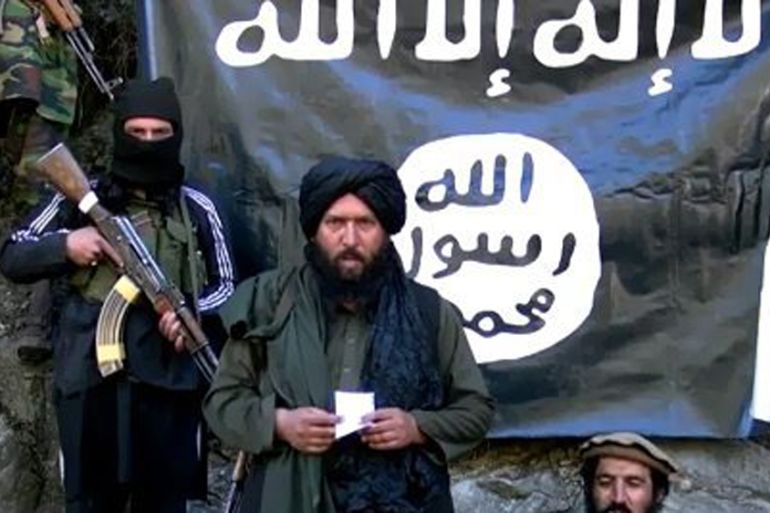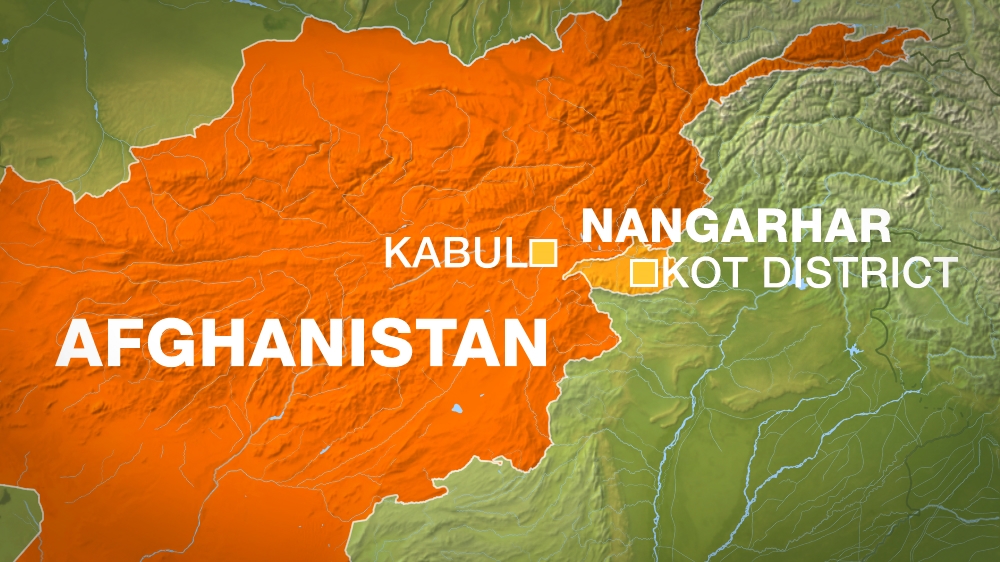Afghan-Pakistan ISIL’s Hafiz Saeed Khan killed
Hafiz Saeed Khan and associates died on July 26 in Nangharhar province during joint US-Afghan operation, say officials.

The leader of the Islamic State of Iraq and the Levant (ISIL) group in Afghanistan and Pakistan was killed in a US drone strike on July 26, US and Afghan officials have confirmed.
Hafiz Saeed Khan, ISIL’s Khorasan Province leader, was killed in Kot district of Afghanistan’s Nangharhar province, according to Hazrat Omar Zakhilwal, the top Afghan diplomat in Pakistan.
Keep reading
list of 4 itemsMoscow theatre attack suspects show signs of beating in court
Four men showing signs of severe beating charged over Moscow concert attack
Russia mourns Moscow concert hall attack victims as death toll rises to 137
He told Reuters news agency on Friday that Hafiz Saeed Khan’s senior commanders and fighters were also killed in the drone strike.
A US defence official confirmed to Reuters that the July 26 drone strike killed Hafiz Saeed Khan.
The so-called Khorasan Province was created by ISIL, also known as ISIS, in 2015 encompassing areas in Pakistan, Afghanistan and parts of Central Asia.

Al Jazeera’s Jennifer Glasse, reporting from Kabul on Saturday, said the drone strike was part of a wider operation against ISIL in Nangarhar that has killed nearly 300 fighters, including some of the group’s leadership.
“The commander of US and NATO forces in Afghanistan General John W Nicholson estimates that about 25 percent of the ISIL fighters in Afghanistan have been killed in the drone strikes.
“He said the killing of Hafiz Saeed Khan will disrupt ISIL recruitment as well as operations.”
The air strike occurred during a month-long joint US-Afghan military operation in July against ISIL in Nangarhar.
READ MORE: The Afghan battlefield has become more complicated
The air strike was carried out with Hafiz Saeed Khan as the target, according to the Pentagon.
“Hafiz Saeed Khan was known to directly participate in attacks against US and coalition forces, and the actions of his network terrorised Afghans, especially in Nangarhar,” said Gordon Trowbridge, Pentagon spokesperson.
Hafiz Saeed Khan, a former member of the Pakistan branch of the Taliban [known as Tehreek-e-Taliban] who swore allegiance to ISIL, had been reported killed last year, but his death was not confirmed.
Rifts and rivalry
The Taliban’s various factions in Afghanistan and Pakistan as well as their al-Qaeda allies are bitter rivals of Abu Bakr al-Baghdadi, the ISIL chief.
The Taliban rejects Baghdadi’s proclamation of himself as the leader of an envisioned worldwide caliphate.
In Afghanistan, Taliban and ISIL fighters have battled over territory in Nangarhar, though both have recently been busier defending against US and Afghan assaults.
Some Afghan Taliban members have defected to ISIL, with fighters apparently adopting the group’s black flag to rebrand themselves as a more lethal force.
READ MORE: Afghanistan villagers describe life under ISIL’s rule
ISIL has been largely confined to a handful of districts in Nangarhar, which borders Pakistan, where ISIL fighters – mostly defectors from the Taliban – are blamed for raids on villages and government outposts.
Nevertheless, fears that ISIL might be expanding its operational reach arose this week when the group took credit for an attack on a Pakistani hospital that killed at least 70 people in the southwestern city of Quetta.
A Pakistani Taliban faction also claimed responsibility for the suicide bombing.
A few weeks earlier, ISIL claimed responsibility for an attack on a rally in Afghanistan’s capital, Kabul, which killed more than 80 people.
|
|